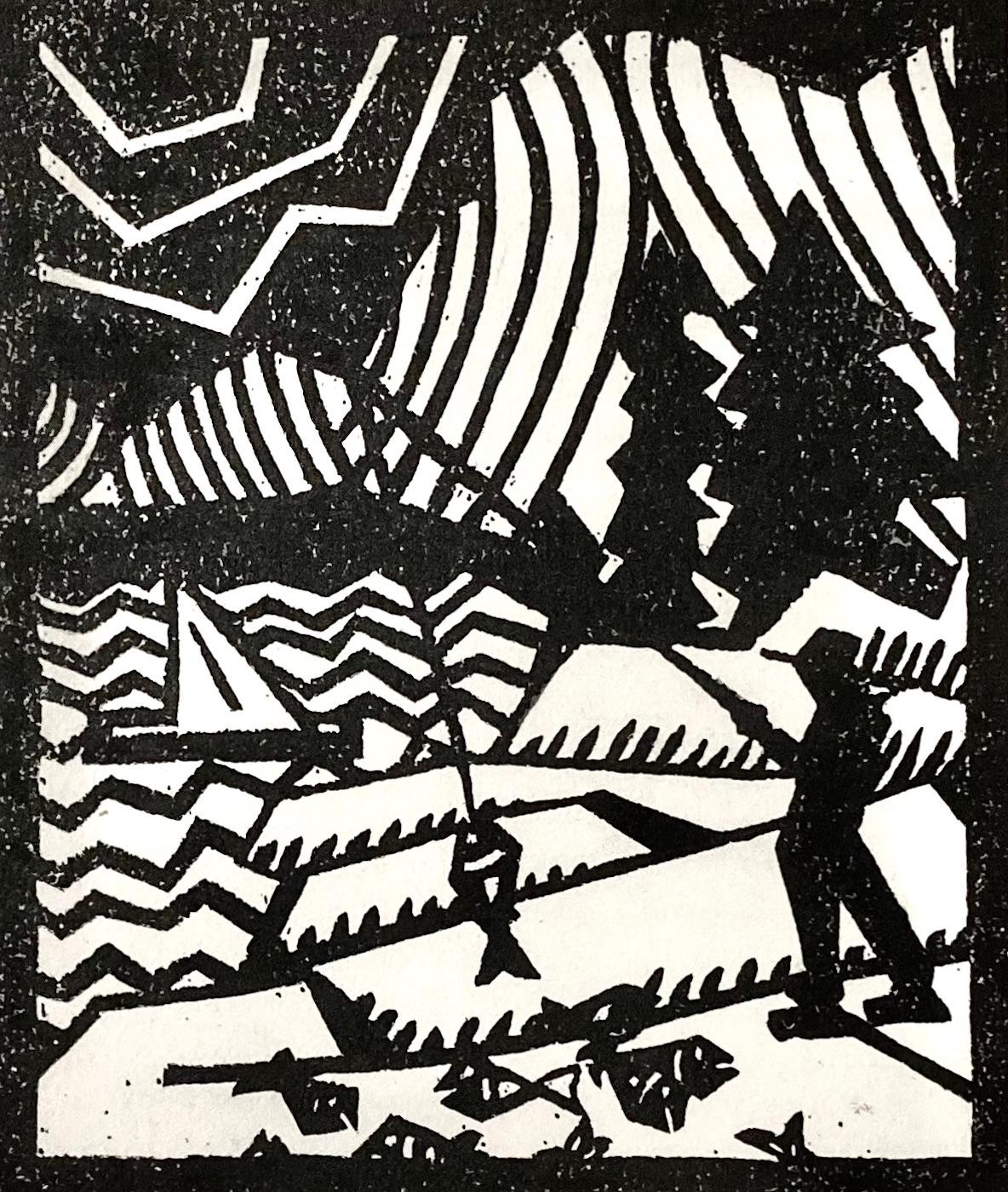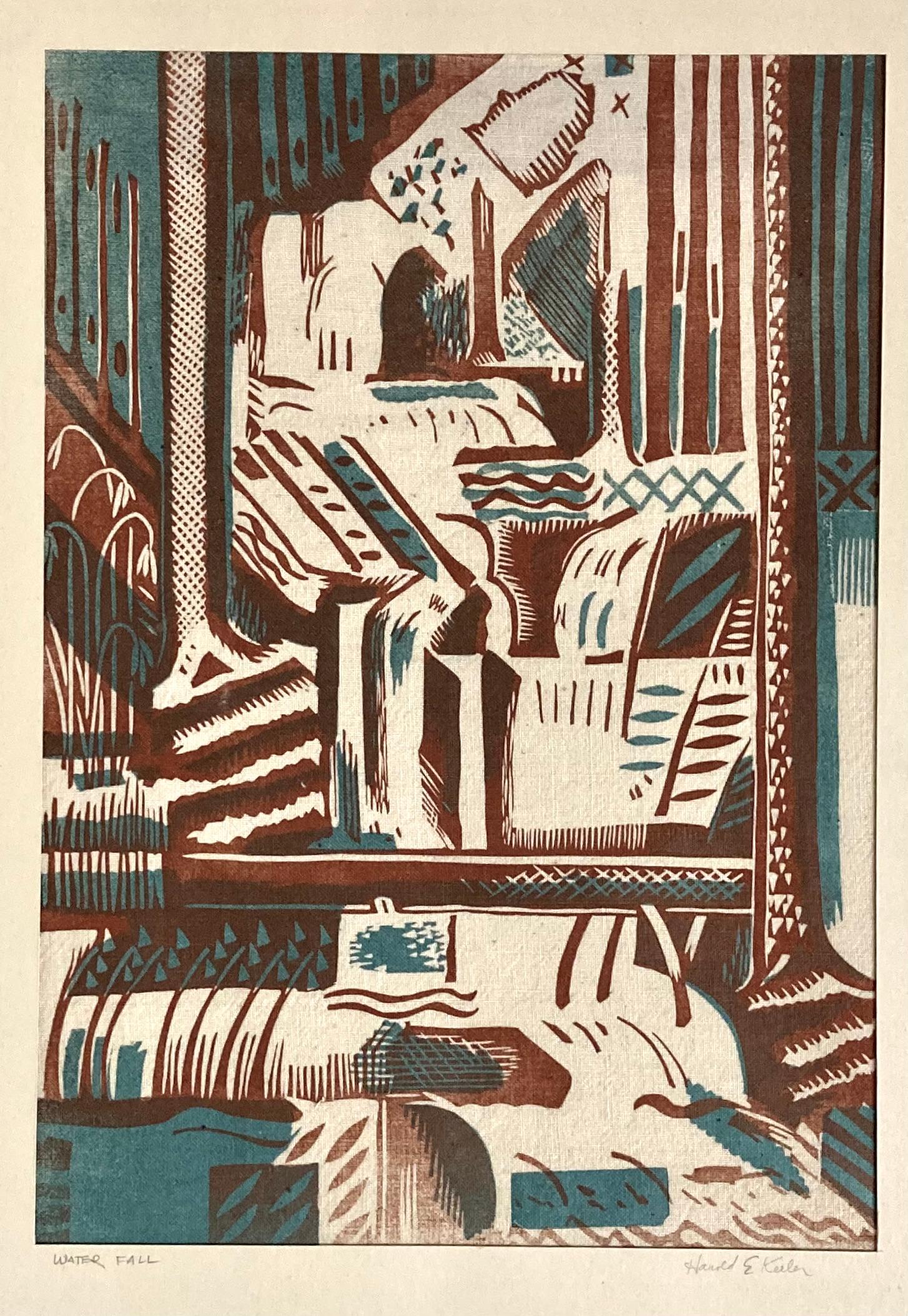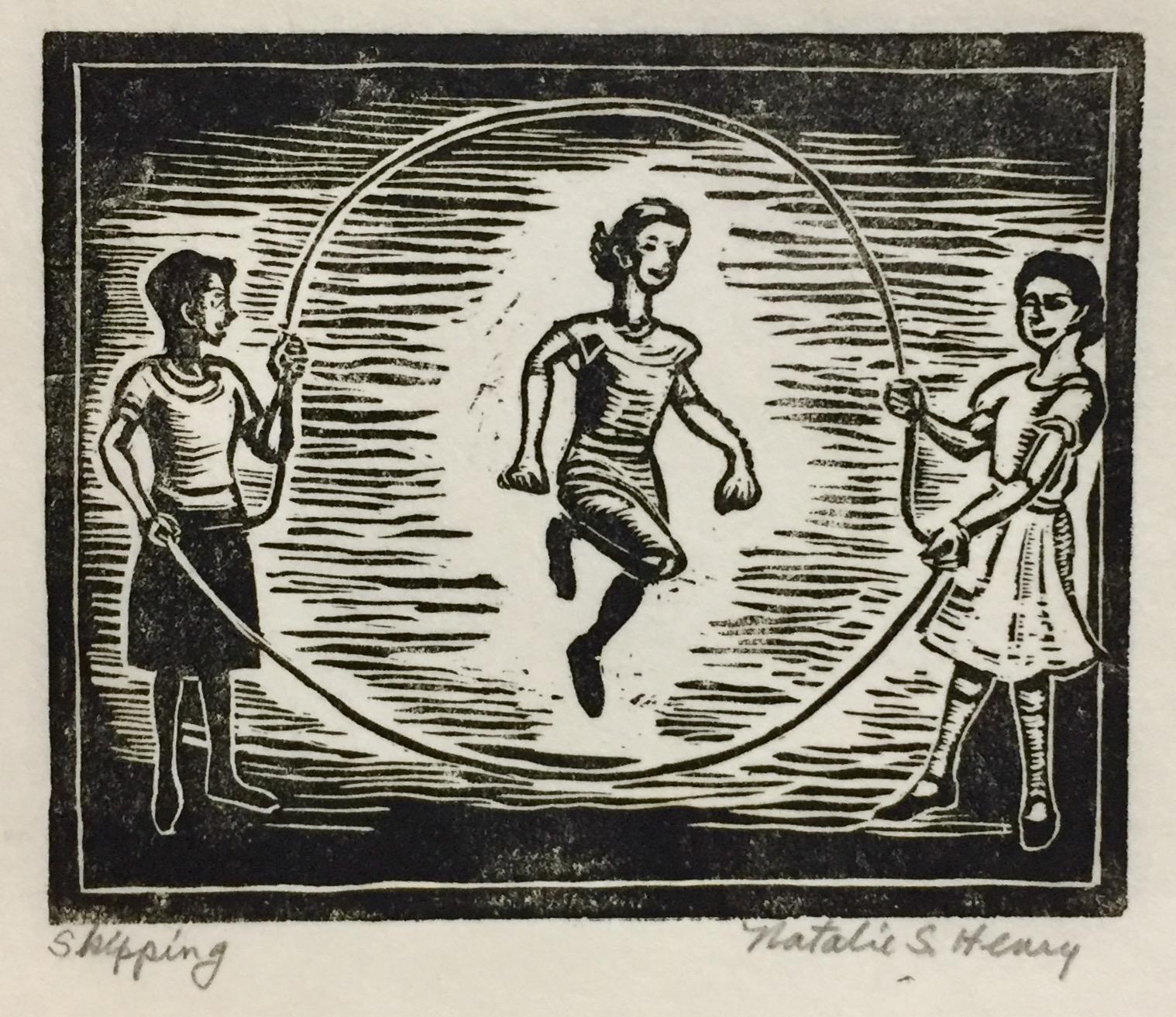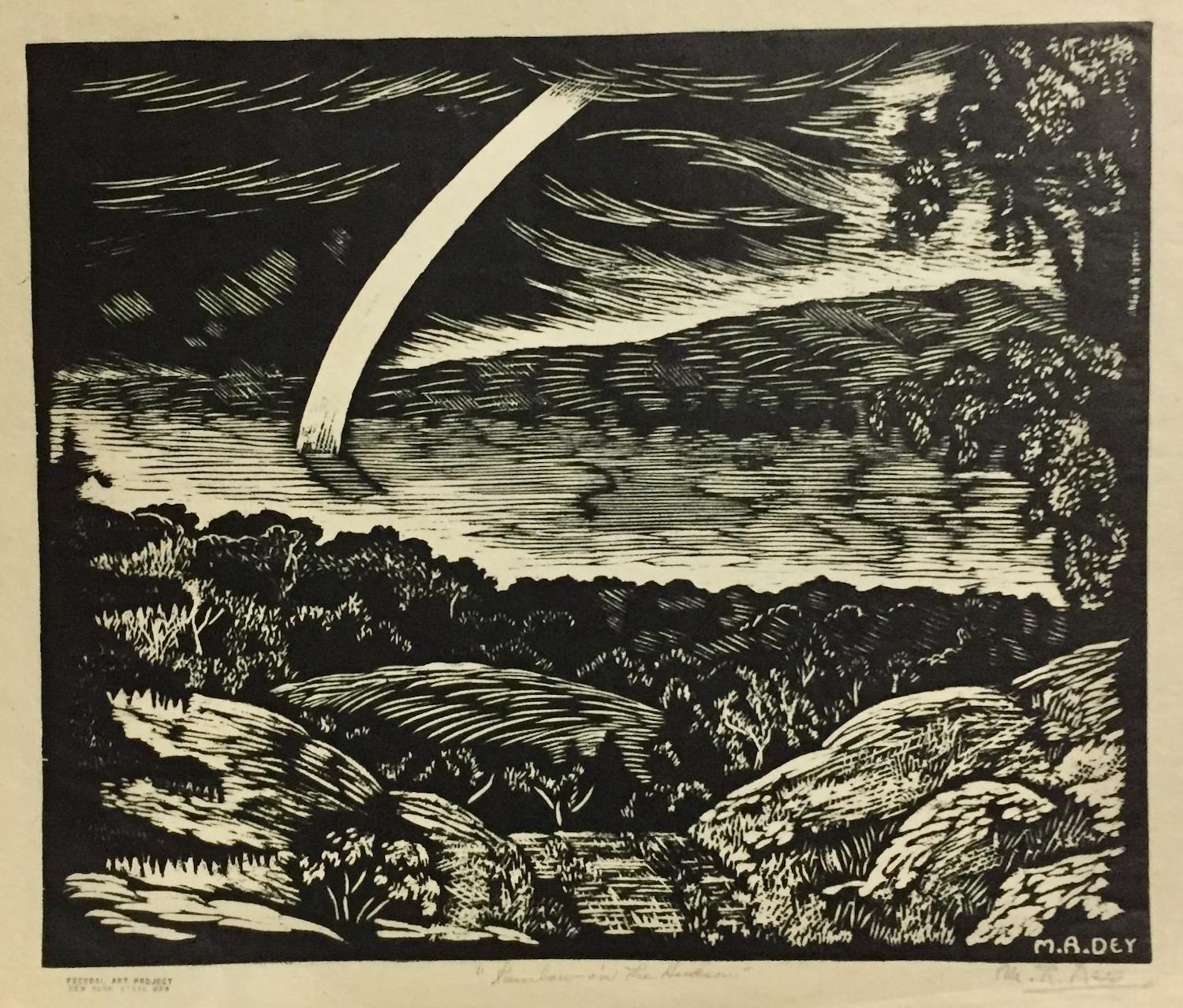Articles similaires à Port avec voiliers Modernisme du début du XXe siècle
Vous voulez plus d'images ou de vidéos ?
Demander au vendeur plus d'images ou de vidéos
1 sur 3
George JosimovichPort avec voiliers Modernisme du début du XXe siècle1923
1923
À propos de cet article
George Josimovich, Untitled (Harbor with Sailboats) ', linocut, 1923, edition 35. Signed, dated, and annotated '4/35' in pencil. Initialed 'G J' in the matrix, lower left. A fine, richly-inked impression, on cream wove Japan paper, with full margins (7/8 to 2 3/4 inches), in excellent condition. Rare. Image size 9 x 8 inches (225 x 203 mm); sheet size 14 1/2 x 10 3/4 inches (368 x 273 mm). Monté sur passe-partout selon la norme muséale, sans cadre.
“Life is in a constant state of flux-never-ceasing motion. Everything breathes, moves, vibrates. And it is my ardent belief that the same should be true in a work of art. It should be alive, dynamically alive. Every part of it should live and every part of it should contribute life to the creation as a whole. ...anyone who is sensitive and creative enough to deserve to be called an artist will consciously or unconsciously react to...those phases of life with which his particular nature and personality have a special kinship. And all this cannot help but leave an impress upon his work which is and must be, if it is sincere, an objective manifestation of his inner self.” —George Josimovich, Illinois Historical Art Project
ABOUT THE ARTIST
Born in Mitrovica, Yugoslavia (present-day Serbia), George Josimovich (1894 - 1986) immigrated to the United States with his parents and three younger brothers in 1908. The family settled in Fort Laramie and Cheyenne, Wyoming, along the Union Pacific Railroad, where his father worked as a tailor. In 1914, motivated by a newspaper advertisement for the Lockwood Art School in Kalamazoo, Michigan, Josimovich set out for the Midwest to pursue a career in art.
From 1914–19 he studied at the School of the Art Institute of Chicago (SAIC) under Karl Buehr and Randall Davey, and alongside fellow students William Schwartz, Emil Armin, and Archibald J. Motley Jr. During his final year at SAIC, Josimovich enrolled in a life class with visiting professor George Bellows, whose teachings about avant-garde art, geometric composition, color theory, and individualism in art exerted a profound influence. An exhibition of applied arts by German artist Hermann Sachs at the Art Institute of Chicago during the winter of 1920–21 also made a strong impression on the young artist. Josimovich studied under Sachs at Chicago’s Hull House and, along with other former SAIC students, followed Sachs to the Dayton Art Museum in Ohio to establish an expressionist craft program.
Josimovich returned to Chicago in 1922, where he joined the Jackson Park art colony and spent the next four years honing his craft and developing theories on composition and form. His works from this period evince a lively experimentation with modernist principles and techniques in oil and watercolor paintings, prints, and drawings. Familiar genres of figure study, still life, and landscape are distilled into abstract arrangements of fragmented forms in radically flattened pictorial space, often within tightly ordered geometric compositions. Throughout the 1920s Josimovich established himself as a leading contemporary artist in the city, exhibiting with the Chicago No-Jury Society of Artists, The Ten, and the Chicago Society of Artists, where he later served as president. Critics lauded him as quintessentially modern, praising his “rigid intellectualism” and his focus on color, form, and movement. Josimovich’s year in Paris in 1926–27, where he encountered other practitioners of abstraction and the theory of purism, further stimulated his modernist approach to art. His French sojourn culminated in a 1927 solo exhibition at the Galerie d’art contemporain in Paris, which garnered much coverage in the press.
In the 1930s, Josimovich dramatically transformed his art and became an expressionist in the vein of French painter Chaim Soutine. Soutine, who had emigrated to Paris in 1913 from Belarus, rose to international prominence through a major show at the gallery of Paul Guillaume in 1923 and subsequent purchases of his work by American collector Albert Barnes. Josimovich’s portraits, still lifes, and landscapes from this period bear some of the hallmarks of Soutine’s work in their exaggerated figures, quivering masses of color, and dynamic brushstrokes, and as a result, sparked strongly divided commentary among Chicago critics.
In the early 1930s, Josimovich was one of the organizers of the Fifty-seventh Street Art Colony, a group of artists with modernist sympathies, and worked briefly for the artists’ relief program of the Works Progress Administration. He continued to show his work through the 1950s in numerous group exhibitions at the Art Institute of Chicago, with the No-Jury Society of Artists and the Chicago Society of Artists, and in a solo exhibition at Knoedler’s Chicago gallery in 1932.
—edited from an essay by Patricia Smith Scanlan for ‘Modernism in the New City, Chicago Artists, 1920-1950’
- Créateur:George Josimovich (1894 - 1986)
- Année de création:1923
- Dimensions:Hauteur : 22,86 cm (9 po)Largeur : 20,32 cm (8 po)
- Support:
- Mouvement et style:
- Période:
- État:
- Adresse de la galerie:Myrtle Beach, SC
- Numéro de référence:
À propos du vendeur
5,0
Vendeur reconnu
Ces vendeurs prestigieux sont des leaders du secteur. Ils représentent le summum en matière de qualité et de design.
Vendeur Platine
agréés par des experts, ces vendeurs sont les plus expérimentés sur 1stDibs et les mieux notés par nos clients.
Établi en 1995
Vendeur 1stDibs depuis 2016
254 ventes sur 1stDibs
Temps de réponse habituel : 1 heure
Associations
International Fine Print Dealers Association
- ExpéditionRecherche du devis...Expédition à partir de : Myrtle Beach, SC
- Politique des retoursCet article peut être retourné sous 7 jours à compter de la date de livraison.
Certaines parties de cette page ont été traduites automatiquement. 1stDibs ne garantit pas l'exactitude des traductions. L'anglais est la langue par défaut de ce site web.
Plus d'articles de ce vendeurTout afficher
- Survivant - Elizabeth CatlettPar Elizabeth CatlettElizabeth Catlett, 'Survivor', linogravure, 1983, édition 1000. Signé, titré, daté et numéroté '914/1000' au crayon. Une belle impression, sur papier vélin crème épais, avec de grand...Catégorie
années 1980, Modernisme américain, Estampes - Figuratif
MatériauxLinogravure
- « Commuters » - Modernisme du début du XXe sièclePar George JosimovichGeorge Josimovich, "Commuters", linogravure, 1922-23, édition 20. Signé, daté '22, titré et annoté '9/20' au crayon. Paraphe en bloc "G.J. '23", en bas à droite. Une belle impression...Catégorie
années 1920, Modernisme américain, Estampes - Figuratif
MatériauxLinogravure
- Bateaux abstraits" - Modernité américaine des années 1930, WPAPar Leon BibelLeon Bibel, "Bateaux abstraits", sérigraphie couleur, 1938, édition 12. Signé, daté et numéroté ' /12' au crayon. Une belle impression picturale, avec des couleurs fraîches, sur un ...Catégorie
années 1930, Modernisme américain, Estampes - Figuratif
MatériauxÉcran
- Coenties Slip" - Lower Manhattan, Financial District, années 1920Par Luigi KasimirLuigi Kasimir, 'Coenties Slip', gravure en couleur avec aquatinte, 1927, édition 100. Signé au crayon. Daté dans la plaque, en bas à droite. Annoté "NEW YORK HANOVER SQUARE (COENTIES...Catégorie
années 1920, Modernisme américain, Estampes - Paysage
MatériauxEau-forte, Aquatinte
- Pont de Brooklyn" - Vue de l'emblème de la ville de New York dans les années 1920Par Luigi KasimirLuigi Kasimir, "Brooklyn Bridge", gravure en couleur avec aquatinte, 1927, édition 100. Signé au crayon. Une superbe impression, avec des couleurs fraîches, sur un papier vélin crè...Catégorie
années 1920, Modernisme américain, Estampes - Paysage
MatériauxEau-forte, Aquatinte
- The Visitor" - Fantaisie surréaliste des années 1930Zena Kavin, "The Visitor", lithographie, c. 1935, édition 20. Signé, titré et numéroté "9/20" au crayon. Une belle impression richement encrée, sur papier vélin crème, avec de grande...Catégorie
années 1930, Modernisme américain, Estampes - Figuratif
MatériauxLithographie
Suggestions
- Martha Reed, (Abstraction Color) (Head?)Par Martha ReedMartha Reed était la fille de l'artiste Doel Reed et, à l'âge adulte, elle a rejoint ses parents à Taos, au Nouveau-Mexique. Elle y a conçu des vêtements à l'esthétique sud-ouest et ...Catégorie
Milieu du XXe siècle, Modernisme américain, Estampes - Abstrait
MatériauxLinogravure
- Typhoon de caractèreLa seule mention que je puisse trouver d'Evelyn G. Schultz est qu'elle était un membre fondateur de la San Diego Watercolor Society. Mais le médium de la linogravure (ici sur du papi...Catégorie
années 1940, Modernisme américain, Estampes - Figuratif
MatériauxLinogravure
- Martha Reed, (fabrication)Par Martha ReedMartha Reed était la fille de l'artiste Doel Reed et, à l'âge adulte, elle a rejoint ses parents à Taos, au Nouveau-Mexique. Elle y a conçu des vêtements à l'esthétique sud-ouest et ...Catégorie
Milieu du XXe siècle, Modernisme américain, Estampes - Abstrait
MatériauxLinogravure
- Harold E. Keeler, Fall d'eauHarold E. Keeler a travaillé à Hollywood comme décorateur. Cela semble particulièrement important ici, car la chute d'eau ressemble un peu à un décor de forêt, du moins pour moi. Mai...Catégorie
années 1930, Modernisme américain, Estampes - Paysage
MatériauxLinogravure
- Natalie S. Henry, Saut à la corde (corde à sauter pour enfants)Signé et titré au crayon. Henry est connue pour ses images d'enfants et son environnement de Chicago. Elle a souvent exposé avec la Chicago Society of Artists.Catégorie
années 1920, Modernisme américain, Estampes - Figuratif
MatériauxLinogravure
- Maurice Robert The, Arc-en-ciel sur l'HudsonIl est difficile de trouver des informations biographiques sur Maurice Robert Dey. Il est né en 1899 (ou peut-être 1900), en Suisse. À l'âge adulte, il a vécu et travaillé à Woodst...Catégorie
années 1930, Modernisme américain, Estampes - Paysage
MatériauxLinogravure





